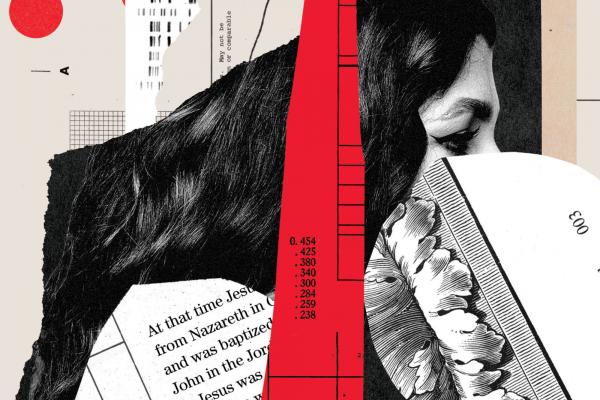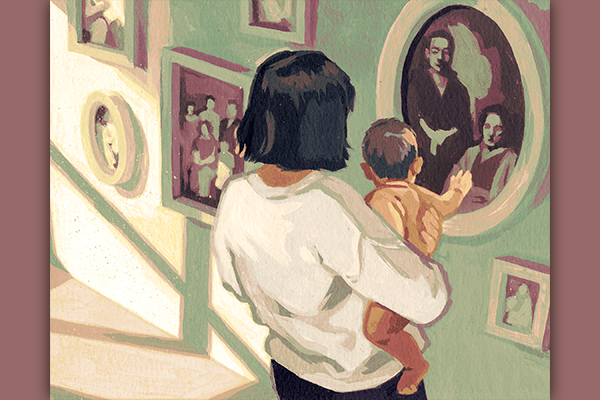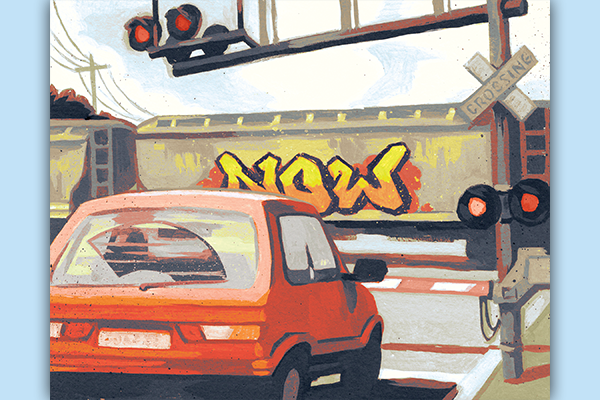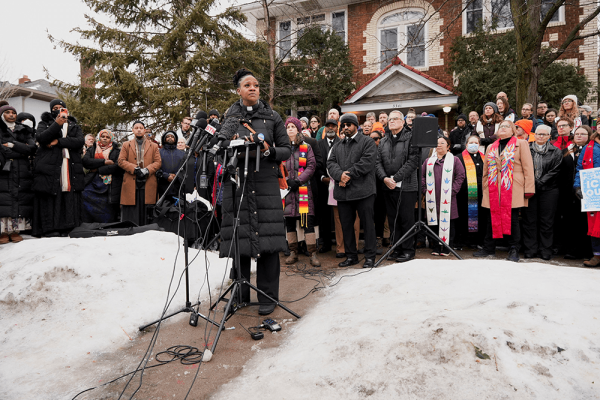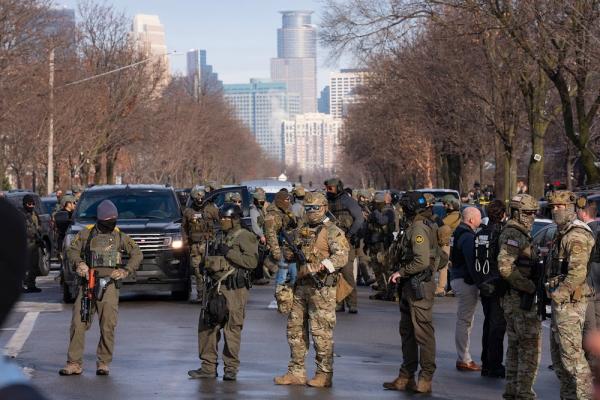I'M HIGHLY SUSPICIOUS of the growing obsession with genetic ancestry tests. 23andMe. AncestryDNA. People can now scrape their inner cheek with a swab, mail it to a company for $99, and brag to you about a cultural or racial epiphany they’ve had based on being 4.7 percent of something. Who knows how this personal genetic information might be used. I suspect these companies respect people’s privacy as much as Facebook does. I’ve heard that governments and police departments are already using this information to track people.
And yet, I would be lying if I said I haven’t thought about purchasing a DNA kit for myself. Yes, I know that such tests provide limited and potentially misleading information. Yes, I understand that they fuel problematic framings of race that tie race to genetics when race is actually something socially and politically constructed. But I’m still curious!
I don’t know if I will ever take a test. I ask myself: Should I be contributing to this system? Could I convince Sojourners to pay for my test if I were to write an article about it, thus shifting some of the ethical burden away from me as an individual?
Thankfully, I was able to cheat. Sort of. My brother recently took a test through AncestryDNA. He sent a link to the results in our siblings group text saying that we should have the exact same results. While what he said was inaccurate—because siblings who share the same two parents can still vary in the percentage of DNA taken from each parent—I did not fact-check his text. I simply replied “thank you” and happily clicked.
An elaborate breakdown pops up: 26 percent Spain; 18 percent Native American from North and Central America; 14 percent Cameroon, Congo, and Southern Bantu peoples; 12 percent Portugal; 8 percent Andean Native American; 5 percent France; 4 percent Benin/Togo; 3 percent Mali; 2 percent Basque; 2 percent Middle East; 1 percent Senegal; 1 percent European Jewish; 1 percent Ivory Coast/Ghana.
What is “Spain”?
Upon seeing these results, the first thing that came to mind is that there’s a high probability that I have significantly more Native American ancestry than Elizabeth Warren. The next thing is what this test does and doesn’t reveal. It shows the obvious: Behind categories such as Latino and Colombian exists a highly mixed heritage stretching back to the period of conquest and slavery, and to the Iberian Peninsula. But at the same time, the test can’t tell me how I see myself. And it certainly can’t control how others see me.
So what if I do have a significant amount of Native American ancestry or African ancestry? Does that mean I should identify as Native or African? That would be absurd. I lack continuity with such communities. But erasing that part of my heritage also seems wrong. I want to honor my ancestry but not exploit it. I can hear an agent or publicist saying, “Daniel, if you lean into X part of your identity, you can increase your market share and increase the number of topics and venues in which you are perceived as an expert.”
Or I could play the game of identity overcompensation. Having been negligent of certain parts of my heritage, I could—later in life—come to a dramatic awakening in which all of my social media posts become me sharing Bantu proverbs and burning sage. But this would feel cheap, like a projection, a shallow performance. It wouldn’t be the real me. It would be a certain packaging of me.
Still, I don’t want to erase my black and indigenous roots in some North American melting pot of whiteness. I don’t want to only privilege my European heritage. There is something true and subversive about refusing to forget one’s ancestry while living in a vast sea of assimilating forgetfulness. But how to do this? My brother’s DNA test doesn’t tell me. It doesn’t tell me how to relate to this information.
The test just says “26 percent Spain.” But what does “Spain” mean? The territory that we now know as Spain was previously known as al-Andalus when it was ruled by Muslims for centuries, and by other names when it was ruled by the Visigoths and the Roman Empire before that. During the medieval period, southern Spain was a site of great cultural exchange. Christians. Jews. Muslims. Europeans. North Africans. Arabs. Without figures such as Córdoba’s Ibn Rushd (Averroes), the Christian West might have never recovered Aristotle’s writings and Thomas Aquinas might have lacked a large chunk of his inspiration.
But we’re often stuck with the whitewashed history of Spain, from the vantage point of the Christian Reconquista, the conquest of Muslim Iberia led by Catholic monarchs Ferdinand II and Isabella. In January, I traveled to southern Spain for the first time and saw this complicated legacy on display. The city of Córdoba has a Catholic cathedral that is built into a mosque, which itself was built on top of a Visigothic basilica. From one spot I could see faded early Christian mosaics; bold, red, double horseshoe arches; elaborate geometric patterns; and Arabic calligraphy. It’s a beautiful site, but it’s also the exception.
After the Reconquista, most churches ended up like the Gothic cathedral of Sevilla, which was built to completely replace the mosque that came before. Sevilla’s cathedral is an imposing structure. I lost my breath as I climbed steps for what seemed like half an hour to get to the top of the cathedral’s tower. As I walked on the ground floor, through what felt like six churches in one, I noticed the site where Christopher Columbus is allegedly buried. Both Spain and the Dominican Republic claim to have his remains. In 2006, Spanish researchers announced that a DNA test proved that Columbus was in Sevilla; Dominicans dismissed the findings and argued that they had the real body of Columbus. Either way, the casket I saw played into a narrative. This Gothic cathedral, the biggest in the world, was meant to tell a new story, even if the remaining orange tree courtyard continues to betray its intentions of purity.
The Reconquista culminated in 1492 with the final defeat of the Moors in Granada and with the official expulsion of unconverted Jews. In the emerging nation of Spain, remaining Jews and Muslims were either killed or forcibly converted. And even after conversion, there was an extreme anxiety about whether the conversions were genuine. Known as conversos and moriscos, Jewish and Muslim converts to the Catholic faith were deemed suspicious. The Spanish Inquisition emerged to purify Spain of these foreign influences, and any former Jews or Muslims suspected of “lapsing in the faith” were put to the death.
In this process, the Spanish obsession with religious purity spilled over into an obsession with a purity of blood, a purity of descent. Conversion wasn’t enough. One needed to prove pure Christian descent, which meant pure European, non-Jewish descent.
Spain was, arguably, the first modern nation that believed itself to be white. It believed itself to be white and violently made it so. Christian supremacy gave way to purity of blood. The history of Spain itself seems to be a projection of identity.
When a DNA test says “26 percent Spain,” what does “Spain” mean? The test can’t say. It can’t say because DNA tests are inconclusive when it comes to proving identity. They’re inconclusive because they provide information that still needs to be interpreted.
Nevertheless, I can understand why individuals latch onto such information, however inconclusive it may be. Colorful graphs, dotted maps, and percentage pies provide some solace in what is otherwise a cold, nebulous search for meaning. Something as fluid as identity is given back to us, quantified, with metrics. We want to understand who we are. We’re looking for anything that can help. One test. Anything. Some type of sign.
These struggles of deciphering identity make me think about Jesus and the moment that his identity was made absolutely clear.
The real and the counterfeit
According to the gospels, Jesus is baptized. In seminary, I learned that historical Jesus scholars disagree on virtually everything about the life of Jesus except for a few things. This is one of those few things. Almost all agree that Jesus was, in fact, baptized by a man named John. Why? Because in the ancient context, this was the kind of embarrassing fact that a religious group would not invent about their leader, their divine figure. Why would God need to go through a purity ritual? Why would God need to be told who they are? This is the scandal of the Incarnation. God in human flesh. The life of Jesus is about showing us what it truly means to be human.
Before Jesus enters public ministry, before he declares that the Spirit of the Lord is upon him to proclaim good news to the poor, Jesus is baptized. Before Jesus engages in any activism, God calls him “beloved.” Before Jesus’ prophetic activity sweeps across the land, this identity is tested. Jesus’ baptism reminds us that before we go out, before we act, before we change the world, we must change ourselves.
Jesus’ mission begins with a humble cleansing. A voice from heaven tells him who he really is. The Christian contemplative tradition describes this dynamic as the true self vs. the false self. We all have a true self that is one with the love of God. But we all are also shadowed by false selves that want to exist outside of this reality. In Seeds of Contemplation, Thomas Merton writes: “The secret of my identity is hidden in the love and mercy of God. ... Therefore there is only one problem on which all my existence, my peace, and my happiness depend: to discover myself in discovering God. If I find God, I will find myself, and if I find my true self I will find God.”
The baptism that is greater than John’s goes to the very core of who we are. As the text says, “His winnowing fork is in his hand, to clear his threshing floor and to gather the wheat into his granary; but the chaff he will burn with unquenchable fire” (Luke 3:17). The winnowing fork and threshing floor refers to the site of our souls. The wheat is our true self; the chaff is our false self. The process of separating these can be painful.
The text continues: “And the Holy Spirit descended upon him in bodily form like a dove. And a voice came from heaven, ‘You are my Son, the Beloved; with you I am well pleased.’” The true self is relational, is greatly loved, is inherently pleasing. The true self is peaceful and does not build itself through domination of others. The false self is violent and formed through domination. The false self eschews relationality and pretends to be utterly independent. The false self is hatred, is internalized self-hatred, is a child of God vandalized. The false self is always depleted, in need of greater approval, greater success, greater results.
Jesus’ baptism points to the inward reality that we struggle with every day, for our entire lives: realizing who we really are. Realizing who we are not. Spotting the dangerous counterfeits.
To change the world, you must change yourself. What this platitude entails is actually scary. If we want injustice in the world to die, parts of us have to die too.
Letting go of the lies
Lately, I have been struck by the meditations of Howard Thurman, a mystic who lived at the height of Jim Crow America. His central concern was this: What does the religion of Jesus have to say to those with their backs against the wall? Although he supported civil rights activists and influenced major figures such as Martin Luther King Jr., Thurman emphasized the importance of the inward life to help people live in the present with dignity. I come away from reading him with a sense of freedom. In a world with such heartless conditions, there is still so much I can do.
This message runs counter to the lie that some of us internalize. The lie that presents us as powerless, helpless, voiceless. The tension is how to be honest about our suffering without being reduced to it.
Chicana writer Gloria Anzaldúa wrote about the U.S.-Mexico border as an open wound. But her radical spirituality also compelled her to look deeper. The border exists within us, within how we see others and see ourselves. Liberation begins with defining the self. In her book Borderlands, she writes: “I seek an exoneration, a seeing through the fictions of white supremacy, a seeing of ourselves in our true guises and not as the false racial personality that has been given to us and that we have given to ourselves.”
What is white supremacy but a systemic false self? It is violent, formed through domination, defaces children of God, and exhibits great fragility through it all. Whiteness is a false self that has formed all of us. But it’s unsustainable. It’s chaff that God will burn, hubris that will burn down the planet.
Whiteness is a fiction that will go down in flames, one way or another.
In the gospel passage, the voice from heaven tells Jesus that he is beloved not because that’s what God needs to hear. It’s what we need to hear. “Beloved” is the true self that the powers and principalities of this world write countless fictions against.
One of the strongest scenes to ever capture this truth is found in Toni Morrison’s novel Beloved. The character of Baby Suggs preaches a kind of sermon and officiates a kind of baptism for a group of people that recently escaped slavery. In a place called “the clearing,” she reintroduces men, women, and children to their own flesh as something to love.
DNA tests can be meaningful, especially when combined with genealogy. They can teach us about family and ancestors. They can correct false stories. When histories of forced separations lead to dead ends, they can provide small clues about what’s on the other side.
But a test can’t get you to love the you that is the culmination of this entire legacy. That requires a type of baptism.
Our own work to build beloved community must begin here, where Jesus begins, grounded in the true beloved self. And what these mystics understand, perhaps better than some others, is that this work takes on a bodily form. Finding our true self is not some purely disembodied act of contemplation. It involves seeing through the lies that have attached themselves to our skin, the fictions that others have written—and sometimes we ourselves have written—onto our bodies.
I don’t know about you, but the skies have never parted for me with a voice telling me I’m beloved. I’ve never found that one indisputable sign that proves my identity. But my grandmother, who is 100 years old and doesn’t remember much, still recognizes my name and smiles when she realizes who I am.
And maybe these are small signs that add up to something, if I observe.
I’m afraid what makes the search for our true self difficult is that it won’t always be pleasant. It’ll be like separating us from the versions of us we are addicted to. It’ll be like finding ourselves with our backs on the threshing floor.
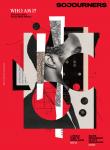
Got something to say about what you're reading? We value your feedback!
